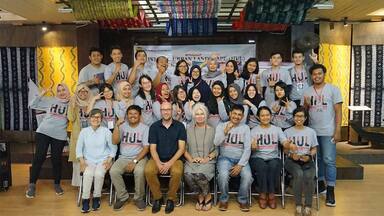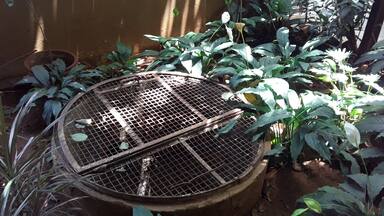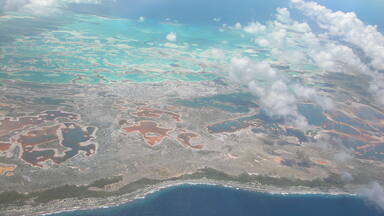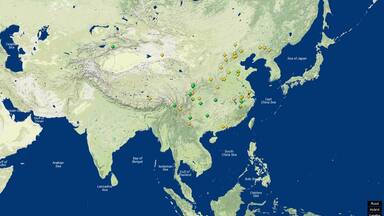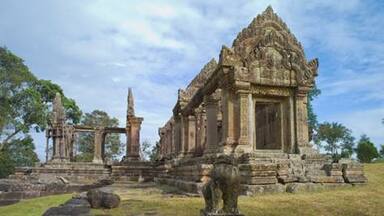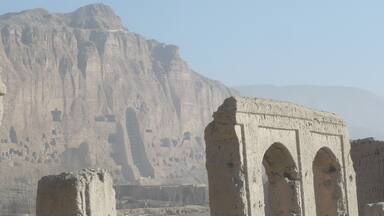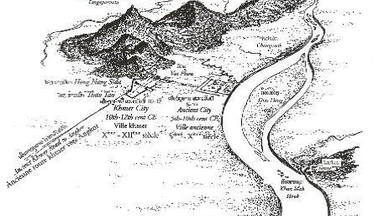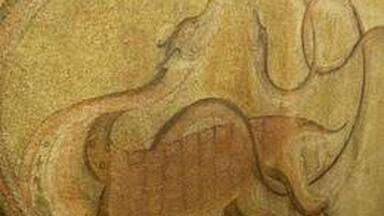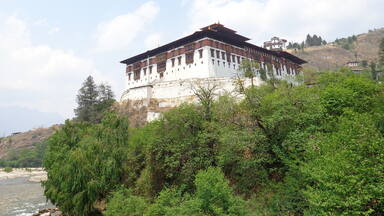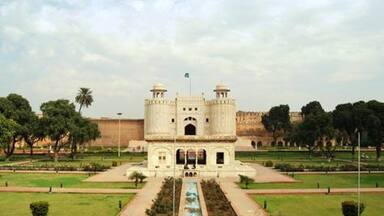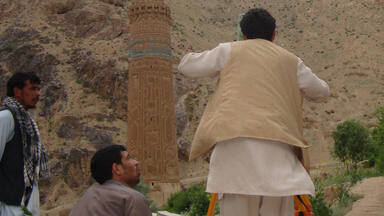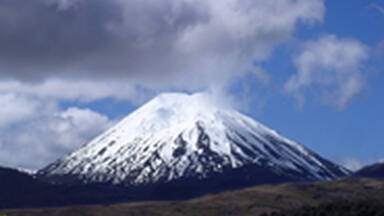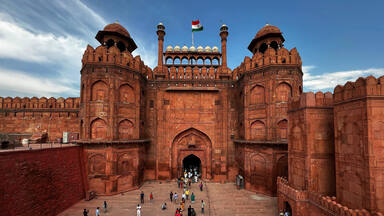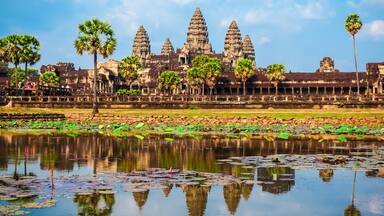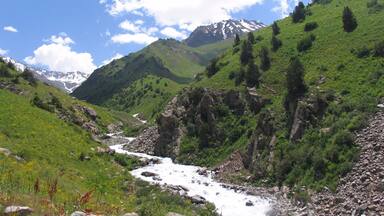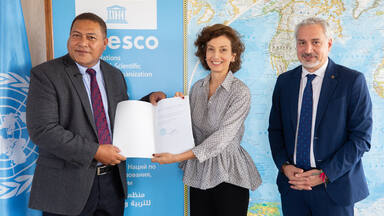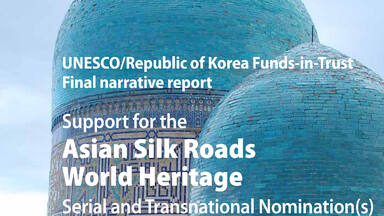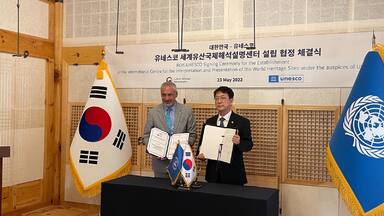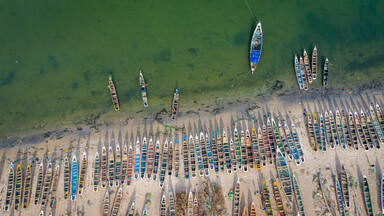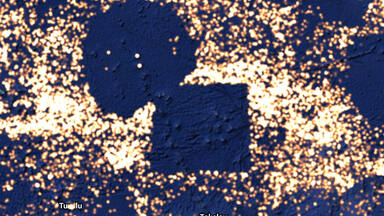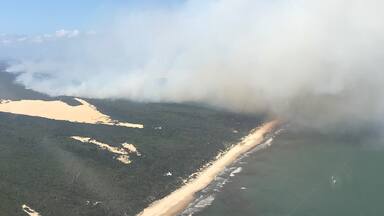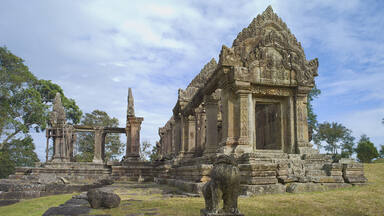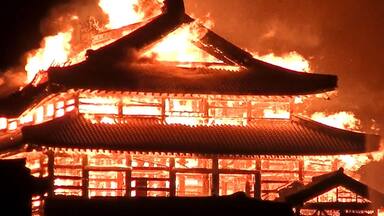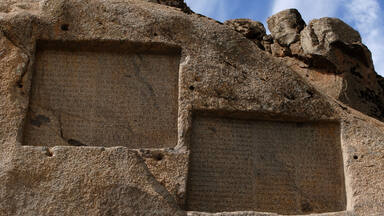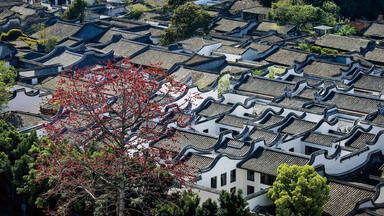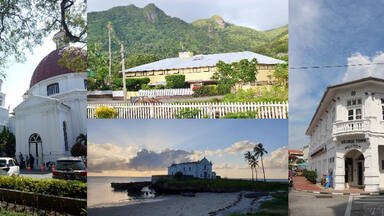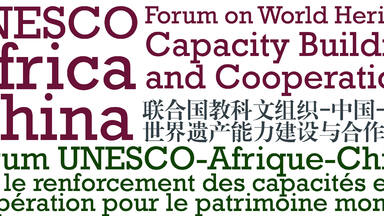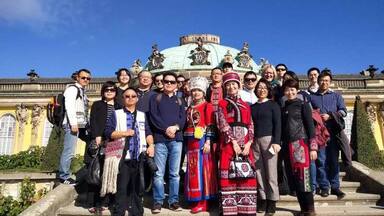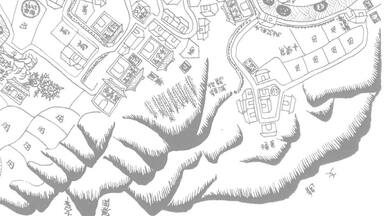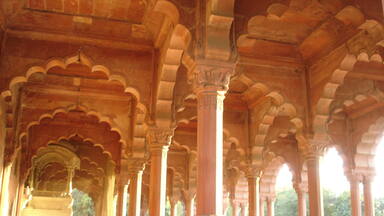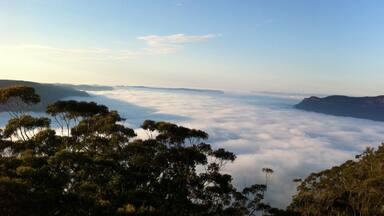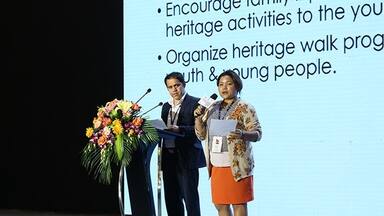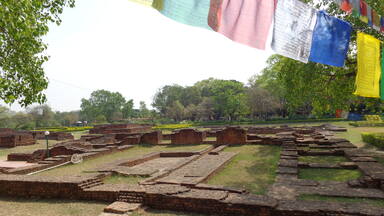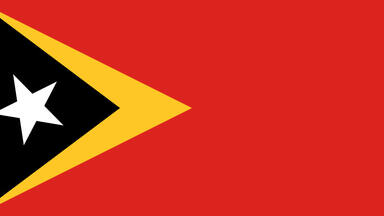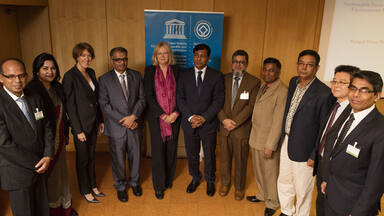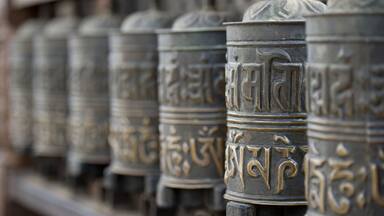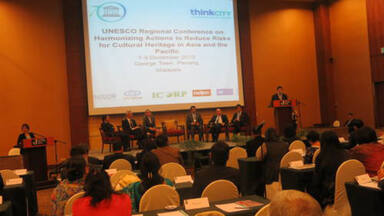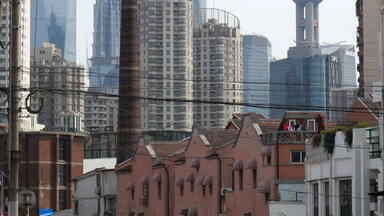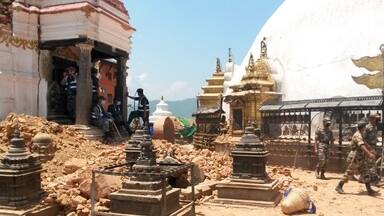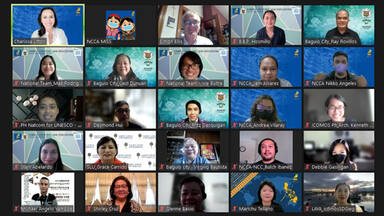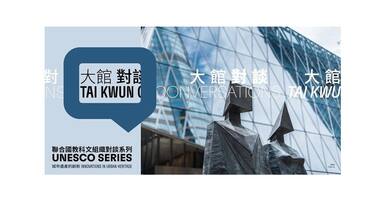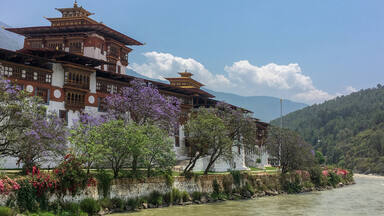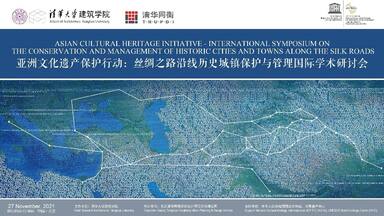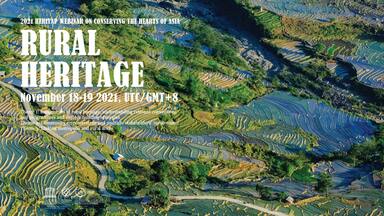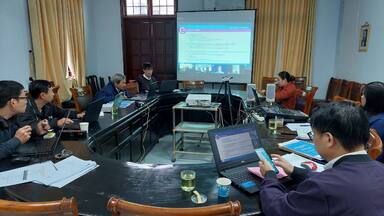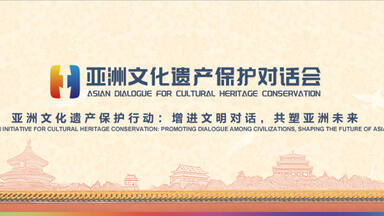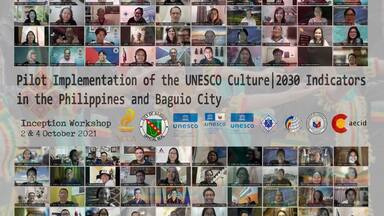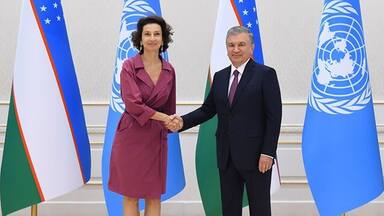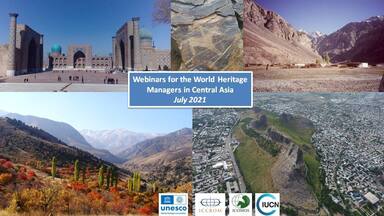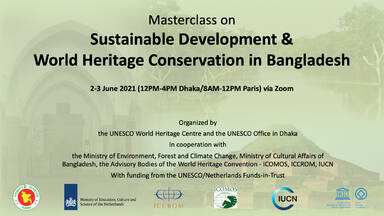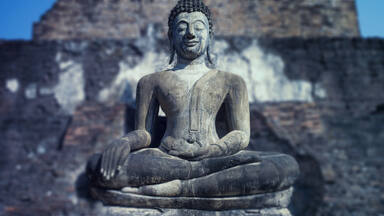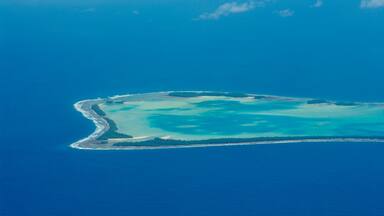Cultural Properties
Mixed Properties
Natural Properties
Transboundary properties
Properties in Danger
Periodic Reporting in Asia & Pacific Region
As a State Party-driven exercise, Periodic Reporting is an essential process for the successful implementation of the 1972 World Heritage Convention. It is a systematic monitoring tool on the implementation of the Convention by the States Parties and provides information on the state of conservation and management of each individual property inscribed on the World Heritage List. The exercise also allows national Focal Points to develop a Regional Action Plan, which is a key strategic document for the implementation of the World Heritage Convention in each region.
for Asia and the Pacific
adopted at the extended 45th session of the World Heritage Committee (Riyadh, 2023)
Third Cycle of Periodic Reporting in APA (2020–2023)
The Third Cycle of Periodic Reporting in the region of Asia and the Pacific was launched in 2020, following Decision 41 COM 10A (Krakow, 2017), in accordance with Article 29 of the 1972 Convention Concerning the Protection of the World Cultural and Natural Heritage.
The reporting exercise took place from September 2020 to July 2021, involving 65 national Focal Points, 272 World Heritage site managers, UNESCO Field Offices and Category 2 Centres from the region. All 44* States Parties to the Convention in Asia and the Pacific (of which 36 have a total of 268 World Heritage properties inscribed on the World Heritage List) were asked to answer an online questionnaire divided into two sections.
A series of 16 online training sessions was organised between September 2020 and March 2021, accompanying the national Focal Points and World Heritage site managers as they filled out the questionnaire, and looked in-depth at specific chapters or topics raised in the questionnaire. (see World Heritage Centre - Online Training for the Periodic Reporting Exercise in Asia and the Pacific).
As a result of the reporting process, a draft Report and a draft Regional Framework Action Plan were prepared by World Heritage experts, in consultation with the national Focal Points, the Category 2 Centres and the UNESCO Field Offices from the region, together with the Advisory Bodies of the World Heritage Committee.
The Report on the results of the Third Cycle of Periodic Reporting in the region of Asia and the Pacific can be found at the following link: Periodic Report - Asia and the Pacific. It was reviewed and endorsed by the World Heritage Committee at its extended 45th session (Riyadh, 2023).
The Regional Framework Action Plan for Asia and the Pacific can also be downloaded separately in a larger, more legible format.
The online training sessions and the close follow-up of the Periodic Reporting exercise at the Asia and the Pacific Unit of the World Heritage Centre were made possible thanks to the support of the UNESCO/Republic of Korea Funds-in-Trust made available by the Cultural Heritage Administration of the Republic of Korea.
* The 45th State Party in the region, Tuvalu, ratified the Convention after the conclusion of the Third Cycle and therefore did not participate in this reporting exercise.
First Cycle
(2003)
The first cycle of Periodic Reporting in Asia and the Pacific, was carried out over a period of several years up until 2003 and led to the successful production of the comprehensive publication entitled “Synthesis Regional Periodic Report for the Asia-Pacific Region 2003”. The subsequent progress and follow up to the first cycle was fruitfully achieved through the implementation of two regional programmes; “ActionAsia 2003-2009” and “World Heritage-Pacific 2009”, which directly respond to the conclusions, recommendations, and action plans resultant from the first cycle.
Second Cycle
(2012)
The second cycle of Periodic Reporting for the Asia and Pacific was launched by the World Heritage Committee at its 34th session in Brasilia, Brazil in August 2010. All 41 State Parties to the Convention in Asia and the Pacific actively participated in this cycle and worked together on this vital component of the Convention. The results of the second cycle will be presented to the World Heritage Committee in 2012 at the 36th session in St. Petersburg, Russian Federation, in June - July 2012.
Decisions (8)
The World Heritage Committee,
- Having examined document WHC/23/45.COM/10A,
- Recalling Decisions 41 COM 10A, 43 COM 10B and 44 COM 10D adopted at its 41st (Krakow, 2017), 43rd (Baku, 2019) and extended 44th (Fuzhou/online, 2021) sessions respectively;
- Notes with satisfaction that the overwhelming majority of States Parties in the Asia and the Pacific region participated in the completion and submission of Section I (State Party level) and Section II (World Heritage property level) of the Periodic Reporting questionnaire;
- Acknowledges that the region of Asia and the Pacific was the first to undergo the Periodic Reporting exercise entirely online due to the global sanitary situation, and thanks the UNESCO World Heritage Centre, the Advisory Bodies, Category 2 Centres, the UNESCO Field Offices and in the region for adapting the training and accompaniment throughout the exercise in line with new engagement modalities;
- Notes with satisfaction that a number of States Parties organised national meetings of Periodic Reporting stakeholders at different stages of the reporting process, and thanks the States Parties in the region for their flexibility and dedication throughout the Third Cycle of Periodic Reporting exercise in Asia and the Pacific, and especially the national Focal Points and World Heritage site managers for their commitment and active participation;
- Thanks the State Party of the Republic of Korea, through its Cultural Heritage Administration, for its contributions towards supporting the implementation of the Third Cycle of Periodic Reporting in the region of Asia and the Pacific via the UNESCO/Republic of Korea Funds-in-Trust mechanism;
- Welcomes with satisfaction the Third Cycle Regional Report for the Asia and the Pacific region and encourages all States Parties to widely disseminate its main outcomes among all relevant stakeholders in the region;
- Endorses the Third Cycle Regional Framework Action Plan developed in cooperation with all States Parties and other heritage stakeholders in the region and notes with satisfaction that the priorities align with those set out in the Declaration unanimously adopted at the UNESCO World Conference on Cultural Policies and Sustainable Development – MONDIACULT 2022 (Mexico City, September 2022) and the reflections undertaken at the international conference “The Next 50 - The Future of World Heritage in Challenging Times, Enhancing Resilience and Sustainability” (Delphi, November 2022);
- Encourages States Parties to appropriate the Regional Framework Action Plan into their national and sub-regional heritage strategies and policies, and requests UNESCO, in collaboration with the Category 2 Centres, the Advisory Bodies and other partners, to support States Parties in its implementation;
- Notes that the Republic of Korea has approved, under its Funds-in-Trust at UNESCO, an extra-budgetary project to be coordinated by the World Heritage Centre on transboundary heritage in the region and beyond, as a follow-up of the main priorities identified through the Third Cycle of Periodic Reporting, invites the Advisory Bodies and other relevant technical partners to provide advisory services and participate in the activities associated with this project, and also encourages all interested Donors to support activities that are in line with the priorities and activities identified in the Framework Action Plan by making dedicated funding available to the World Heritage Centre and the UNESCO Field Offices;
- Encourages States Parties in the region to initiate regular meetings at the regional and/or sub-regional level to ensure continuous implementation and monitoring of the Regional Framework Action Plan, and invites States Parties and other relevant stakeholders to support such efforts;
- Takes note of the possible publication of a World Heritage Papers Series volume dedicated to the Third Periodic Report for the Asia and the Pacific region, if the financial situation permits, and encourages States Parties to make financial contributions available at the World Heritage Centre for this purpose;
- Requests the UNESCO World Heritage Centre to monitor the implementation of the Framework Action Plan for Asia and the Pacific in view of preparing a mid-cycle assessment report after 3 years.
The World Heritage Committee,
- Having examined Document WHC/23/45.COM/10D,
- Recalling Decision 43 COM 10A.1 and 44 COM 10C.3 adopted at its 43rd (Baku, 2019) and extended 44th (Fuzhou/online 2021) session respectively,
- Welcomes the progress made in the follow-up of the Second Cycle of Periodic Reporting in the region of Asia and the Pacific;
- Thanks the Governments of China, Japan, the Netherlands and the Republic of Korea as well as the European Union for their contributions towards supporting follow-up activities to the Second Cycle of Periodic Reporting in the region of Asia and the Pacific;
- Takes note of the progress made on the Silk Roads nomination process, initiated by the Asian States Parties in collaboration with the World Heritage Centre, and commends the fruitful international cooperation between the national institutions of various States Parties in the region;
- Welcomes the progress made in finalizing Retrospective Statements of Outstanding Universal Value in Asia and the Pacific and reminds States Parties that have not yet done so to submit Retrospective Statements of Outstanding Universal Value by 1 February 2024, as well as clarifications of boundaries by 1 December 2023 at the latest, for review by the Advisory Bodies and consideration at the upcoming sessions of the Committee.
The World Heritage Committee,
- Having examined Document WHC/19/43.COM/10A,
- Recalling Decision 40 COM 10B.1 adopted at its 40th session (Istanbul/UNESCO, 2016),
- Welcomes the progress made in the follow-up of the Second Cycle of Periodic Reporting in the region of Asia and the Pacific;
- Thanks the Governments of Japan, Malaysia, the Netherlands, the Republic of Korea and the United States of America for their contributions towards supporting follow-up activities to the Second Cycle of Periodic Reporting in the region of Asia and the Pacific;
- Takes note of the progress made on the Silk Roads nomination process, initiated by the Asian States Parties in collaboration with the World Heritage Centre, also notes the strategic shift from nomination to conservation, in view of the region’s growing conservation issues linked to development, and commends the fruitful international cooperation between the national institutions of various States Parties in the region;
- Reiterates its invitation to States Parties in Asia and the Pacific to actively implement the relevant sub-regional Action Plans before the start of the Third Cycle of Periodic Reporting, foreseen in September 2020, and encourages them to intensify their efforts towards the implementation of follow-up activities, to be planned and developed in close collaboration with the World Heritage Centre and the Advisory Bodies, and to seek any additional means necessary to do so;
- Further reminds States Parties, which have not already done so, to submit their Retrospective Statements of Outstanding Universal Value by 1 February 2020 at the latest, as well as clarifications of boundaries by 1 December 2019 at the latest;
- Requests the World Heritage Centre to present a progress report on the implementation of the Action Plan(s) for the Second Cycle of Periodic Reporting for Asia and the Pacific region at its 45th session in 2021.
The World Heritage Committee,
- Having examined Document WHC-15/39.COM/10B,
- Recalling Decisions 36 COM 10A, 37 COM 10C.1 and 38 COM 10B.1 adopted at its 36th session (Saint Petersburg, 2012), 37th session (Phnom Penh, 2013) and 38th session (Doha, 2014) respectively;
- Welcomes the progress made in the follow-up of the second cycle of Periodic Reporting in the Asia and the Pacific region;
- Thanks the governments of Japan, Korea and the Netherlands for their contributions to supporting World Heritage follow-up activities on the second cycle of Periodic Reporting in the Asia and the Pacific region;
- Also thanks the World Heritage Institute of Training and Research for the Asia and the Pacific Region (WHITR-AP), a category 2 centre under the auspices of UNESCO, for its contribution to the implementation of activities concluded in the Capacity-Building Strategy and Associated Programmes for Asia and the Pacific (CBSAP-AP) for the follow-up to the second cycle of Periodic Reporting; and the International Centre on Space Technologies for Natural and Cultural Heritage (HIST, China) for its initiative in promoting regional cooperation on World Heritage in Asia and the Pacific;
- Takes note of the progress made on the Silk Roads nomination process, initiated by the Asian States Parties in collaboration with the World Heritage Centre, that includes fruitful cooperation between national institutions from various Asian States Parties resulting in an example of best practice for other serial transnational nominations, and developing a tool for international cooperation, shared approaches, better management and conservation practice, as well as sustainable tourism management of the Silk Road heritage corridors;
- Reiterates its invitation to Asia and the Pacific States Parties to actively implement the respective sub-Regional Action Plans and also encourages them to intensify their contributions to the implementation of follow-up activities while working closely with the World Heritage Centre and the Advisory Bodies;
- Requests the World Heritage Centre to present a progress report on the follow-up activities to the second cycle of Periodic Reporting at its 40th session in 2016.
The World Heritage Committee,
- Having examined Document WHC-14/38.COM/8E,
- Congratulates the States Parties for the excellent work accomplished in the elaboration of retrospective Statements of Outstanding Universal Value for World Heritage properties in their territories;
- Adopts the retrospective Statements of Outstanding Universal Value, as presented in the Annex of Document WHC-14/38.COM/8E, for the following World Heritage properties:
- China: Wulingyuan Scenic and Historic Interest Area;
- Japan: Gusuku Sites and Related Properties of the Kingdom of Ryukyu; Historic Monuments of Ancient Nara; Historic Villages of Shirakawa-go and Gokayama; The Hiroshima Peace Memorial (Genbaku Dome);
- Sri Lanka: Sinharaja Forest;
- Vietnam: Hoi An Ancient Town; Complex of Hué Monuments;
EUROPE AND NORTH AMERICA:
- Albania: Butrint;
- Armenia: Monastery of Geghard and the Upper Azat Valley;
- Austria: Semmering Railway; Wachau Cultural Landscape;
- Azerbaijan: Walled City of Baku with the Shirvanshah's Palace and Maiden Tower;
- Belarus / Estonia / Finland / Latvia / Lithuania / Moldova / Norway / Russian Federation / Sweden / Ukraine: Struve Geodetic Arc;
- Belgium: Major Town Houses of the Architect Victor Horta (Brussels); Neolithic Flint Mines at Spiennes (Mons); Notre-Dame Cathedral in Tournai; Plantin-Moretus House-Workshops-Museum Complex;
- Bosnia and Herzegovina: Old Bridge Area of the Old City of Mostar;
- Cyprus: Paphos;
- Denmark: Ilulissat Icefjord;
- Finland: Bronze Age Burial Site of Sammallahdenmäki; Fortress of Suomenlinna; Old Rauma; Petäjävesi Old Church; Verla Groundwood and Board Mill;
- Georgia: Historical Monuments of Mtskheta; Upper Svaneti;
- Germany / Poland: Muskauer Park / Park Mużakowski;
- Germany: Abbey and Altenmünster of Lorsch; Bauhaus and its Sites in Weimar and Dessau; Castles of Augustusburg and Falkenlust at Brühl; Collegiate Church, Castle and Old Town of Quedlinburg; Garden Kingdom of Dessau-Wörlitz; Luther Memorials in Eisleben and Wittenberg; Monastic Island of Reichenau; Palaces and Parks of Potsdam and Berlin; Pilgrimage Church of Wies; St Mary's Cathedral and St Michael's Church at Hildesheim; Völklingen Ironworks; Wartburg Castle; Würzburg Residence with the Court Gardens and Residence Square; Zollverein Coal Mine Industrial Complex in Essen;
- Holy See / Italy: Historic Centre of Rome, the Properties of the Holy See in that City Enjoying Extraterritorial Rights and San Paolo Fuori le Mura;
- Holy See: Vatican City;
- Iceland: Þingvellir National Park;
- Italy: Botanical Garden (Orto Botanico), Padua; Ferrara, City of the Renaissance, and its Po Delta; Historic Centre of Florence; Historic Centre of Naples;
- Lithuania / Russian Federation: Curonian Spit;
- Lithuania: Kernavė Archaeological Site (Cultural Reserve of Kernavė);
- Malta: City of Valletta; Hal Saflieni Hypogeum; Megalithic Temples of Malta;
- Mongolia / Russian Federation: Uvs Nuur Basin;
- Montenegro: Natural and Culturo-Historical Region of Kotor;
- Netherlands: Historic Area of Willemstad, Inner City and Harbour, Curaçao;
- Norway: Vegaøyan -- The Vega Archipelago; West Norwegian Fjords – Geirangerfjord and Nærøyfjord;
- Poland: Centennial Hall in Wrocław; Historic Centre of Warsaw;
- Portugal: Historic Centre of Évora; Landscape of the Pico Island Vineyard Culture; Monastery of Alcobaça; Monastery of the Hieronymites and Tower of Belém in Lisbon;
- Russian Federation: Church of the Ascension, Kolomenskoye; Historical Centre of the City of Yaroslavl; Kizhi Pogost;
- Slovakia: Bardejov Town Conservation Reserve; Vlkolínec;
- Slovenia: Škocjan Caves;
- Spain: Archaeological Ensemble of Mérida; Burgos Cathedral; Historic Centre of Cordoba; Monastery and Site of the Escurial, Madrid; Monuments of Oviedo and the Kingdom of the Asturias; Mudejar Architecture of Aragon; Old City of Salamanca; Old Town of Ávila with its Extra-Muros Churches; Old Town of Cáceres; Old Town of Segovia and its Aqueduct; Poblet Monastery; Route of Santiago de Compostela; Royal Monastery of Santa María de Guadalupe; San Cristóbal de La Laguna; Santiago de Compostela (Old Town); Works of Antoni Gaudí;
- Turkey: Archaeological Site of Troy; City of Safranbolu; Hattusha: the Hittite Capital; Xanthos-Letoon;
- Ukraine: Kiev: Saint-Sophia Cathedral and Related Monastic Buildings, Kiev-Pechersk Lavra;
- United Kingdom: Gough and Inaccessible Islands; Henderson Island; Historic Town of St George and Related Fortifications, Bermuda;
- United States of America: Cahokia Mounds State Historic Site; Chaco Culture; Independence Hall; Mesa Verde National Park; Monticello and the University of Virginia in Charlottesville; Statue of Liberty;
LATIN AMERICA AND THE CARRIBBEANS:
- Argentina: Ischigualasto / Talampaya Natural Parks; Los Glaciares; Península Valdés;
- Belize: Belize Barrier Reef Reserve System;
- Bolivia: City of Potosí;
- Brazil: Brasilia; Historic Centre of Salvador de Bahia; Historic Centre of São Luís; Historic Centre of the Town of Diamantina; Historic Centre of the Town of Goiás; Historic Centre of the Town of Olinda; Historic Town of Ouro Preto; Sanctuary of Bom Jesus do Congonhas;
- Colombia: Los Katíos National Park;
- Costa Rica / Panama: Talamanca Range-La Amistad Reserves / La Amistad National Park;
- Cuba: Archaeological Landscape of the First Coffee Plantations in the South-East of Cuba; San Pedro de la Roca Castle, Santiago de Cuba; Urban Historic Centre of Cienfuegos; Viñales Valley;
- Dominican Republic: Colonial City of Santo Domingo;
- Guatemala: Tikal National Park;
- Panama: Coiba National Park and its Special Zone of Marine Protection; Fortifications on the Caribbean Side, Portobelo and San Lorenzo;
- Suriname: Central Suriname Nature Reserve; Historic Inner City of Paramaribo;
4. Decides that retrospective Statements of Outstanding Universal Value for World Heritage properties in Danger will be reviewed by the Advisory Bodies in priority;
5. Further decides that, considering the high number of retrospective Statements of Outstanding Universal Value to be examined, the order in which they will be reviewed by the Advisory Bodies will follow the Second Cycle of Periodic Reporting, namely:
- World Heritage properties in the Arab States;
- World Heritage properties in Africa;
- World Heritage properties in Asia and the Pacific;
- World Heritage properties in Latin America and the Caribbean;
- World Heritage properties in Europe and North America;
6. Takes note that the World Heritage Centre is in the process of harmonising all sub-headings in the adopted Statements of Outstanding Universal Value and, as appropriate, reflects name changes of World Heritage properties throughout the text of the Statements as requested by the Committee at its 37th session, and requests the World Heritage Centre to also update the size of the property and/or its buffer zone, as appropriate, following subsequent Decisions of the World Heritage Committee concerning Minor Boundary Modifications.
7. Requests the States Parties to provide support to the World Heritage Centre for translation of the adopted Statements of Outstanding Universal Value into English or French respectively, and finally requests the Centre to upload the two language versions on its website.
The World Heritage Committee,
- Having examined Document WHC-14/38.COM/10B,
- Recalling decisions 36 COM 10A and 37 COM 10 C.1, adopted at its 36th session (Saint Petersburg, 2012) and 37th session (Phnom Penh, 2013) respectively,
- Welcomes the progress made in the follow-up of the second cycle of Periodic Reporting in the Asia and the Pacific region;
- Notes with appreciation the contribution of the Government of Australia to the organization of a sub-regional workshop in the Pacific for the follow-up of the second cycle of Periodic Reporting;
- Also notes with appreciation the contribution of the World Heritage Institute of Training and Research for the Asia and the Pacific Region (WHITR-AP), a category 2 centre under the auspices of UNESCO, to the implementation of integrated capacity building activities for the follow-up to the second cycle of Periodic Reporting; and the International Centre on Space Technologies for Natural and Cultural Heritage (HIST, China) for its initiative in promoting regional cooperation on World Heritage in Asia and the Pacific;
- Encourages the Centre for World Natural Heritage Management and Training for Asia and the Pacific Region, established as part of the Wildlife Institute of India (WII) as a category 2 centre under the auspices of UNESCO, to support capacity building and training activities for natural World Heritage in the region;
- Calls upon Asia-Pacific States Parties to actively implement the Regional Action Plans and also encourages them to intensify their contributions to the implementation of follow-up activities while working closely with the World Heritage Centre and the Advisory Bodies;
- Reminds States Parties which have not already done so to submit their Retrospective Statements of Outstanding Universal Value by 1 February 2015 at the latest, as well as clarifications of boundaries by 1 December 2014 at the latest;
- Requests the World Heritage Centre to present a progress report on the implementation of the Action Plans for Asia and the Pacific region at its 39th session in 2015.
The World Heritage Committee,
1. Having examined Document WHC-13/37.COM/10C,
2. Recalling Decision 36 COM 10A , adopted at its 36th session (Saint Petersburg, 2012),
3. Welcomes the progress made in the follow-up of the second cycle of Periodic Reporting in Asia and the Pacific;
4. Thanks the Government of Indonesia for its contribution to the organization of a sub-regional workshop for the follow-up of the second cycle of Periodic Reporting;
5. Also thanks the World Heritage Institute of Training and Research for the Asia and the Pacific Region (WHITRAP), the UNESCO Category 2 Centre for its contribution to the implementation of integrated capacity-building activities for the follow-up to the second cycle of Periodic Reporting;
6. Calls upon States Parties to actively implement the regional Action Plans and encourages them to intensify their contributions to the implementation of follow-up activities while working closely with the World Heritage Centre and the Advisory Bodies;
7. Requests the World Heritage Centre to present a progress report at its 38th session in 2014.
Read more about the decisionThe World Heritage Committee,
1. Having examined document WHC-12/36COM/10A;
2. Recalling Decisions 34 COM 10C and 35 COM 10C.1 adopted respectively at its 34th session (Brasilia, 2010) and 35th session (UNESCO, 2011);
3. Expresses its sincere appreciation to the States Parties from Asia and the Pacific for their efforts in preparing and submitting their Periodic Reports and thanks especially all focal points and site managers for their effective participation and commitment;
4. Notes with satisfaction that all the 41 States Parties of Asia and the Pacific fully participated in the Periodic Reporting exercise and all 41 questionnaires of the Section I and all 198 questionnaires of the Section II were successfully submitted;
5. Also notes with satisfaction that all the 166 draft retrospective Statements of Outstanding Universal Value were submitted to the World Heritage Centre;
6. Thanks the authorities of Australia, China, French Polynesia, India, Republic of Korea, and Samoa for their support in organizing regional and sub-regional meetings;
7. Also notes the successful use of the electronic tool and the ensuing pertinent documentation gathered in the World Heritage Centre database for future monitoring and follow-up;
8. Welcomes with satisfaction the synthesis report of Asia and the Pacific and endorses the regional Action Plan proposed by the focal points during the Suwon meeting for Asia, and the Pacific Action Plan adjusted by the focal points during the Apia meeting for the Pacific;
9. Decides that significant modifications to boundaries and changes to criteria (renominations) requested by States Parties as a follow-up to the second cycle of the Periodic Reporting exercise will not fall within the limit of two nominations per State Party per year imposed by Paragraph 61 of the Operational Guidelines, while they will still fall within the overall limit of forty-five complete nominations per year. This decision shall apply for the 1 February 2013 and 1 February 2014 deadlines for Asia and the Pacific, after which time the normal limit established in Paragraph 61 will be resumed;
10. Encourages the States Parties and all other World Heritage partners and stakeholders in Asia and the Pacific to actively cooperate and to take the necessary actions to follow-up in a concerted and concrete manner the implementation of the Action Plans;
11. Also encourages the World Heritage Institute of Training and Research for the Asia and the Pacific Region (WHITRAP), the UNESCO Category 2 Centre, to take a lead in developing a regional capacity-building strategy and associated programmes;
12. Further notes that the proposals contained in the Action Plans have considerable resource and workload implications for the States Parties, the World Heritage Centre and the Advisory Bodies and encourages States Parties to contribute to their implementation through extra-budgetary funding;
13. Also welcomes the proposals made by the Governments of China, Indonesia, and the Islamic Republic of Iran to organize sub-regional workshops on several issues identified in the Action Plan and the proposals made by the Governments of Japan and the Republic of Korea to financially contribute to the implementation of Action Plans and the follow-up of Periodic Reporting;
14. Also thanks the Government of Japan for financing the development of a publication of the outcome of Periodic Reporting of Asia and the Pacific, and requests the World Heritage Centre to widely disseminate the Periodic Report among all stakeholders in the region;
15. Requests the States Parties to continue to work closely with the World Heritage Centre and the Advisory Bodies to further develop and implement both at national and sub-regional levels operational programmes based on the Regional Action Plans, and also requests the World Heritage Centre to present a progress report thereon at its 37th session in 2013.
Read more about the decision